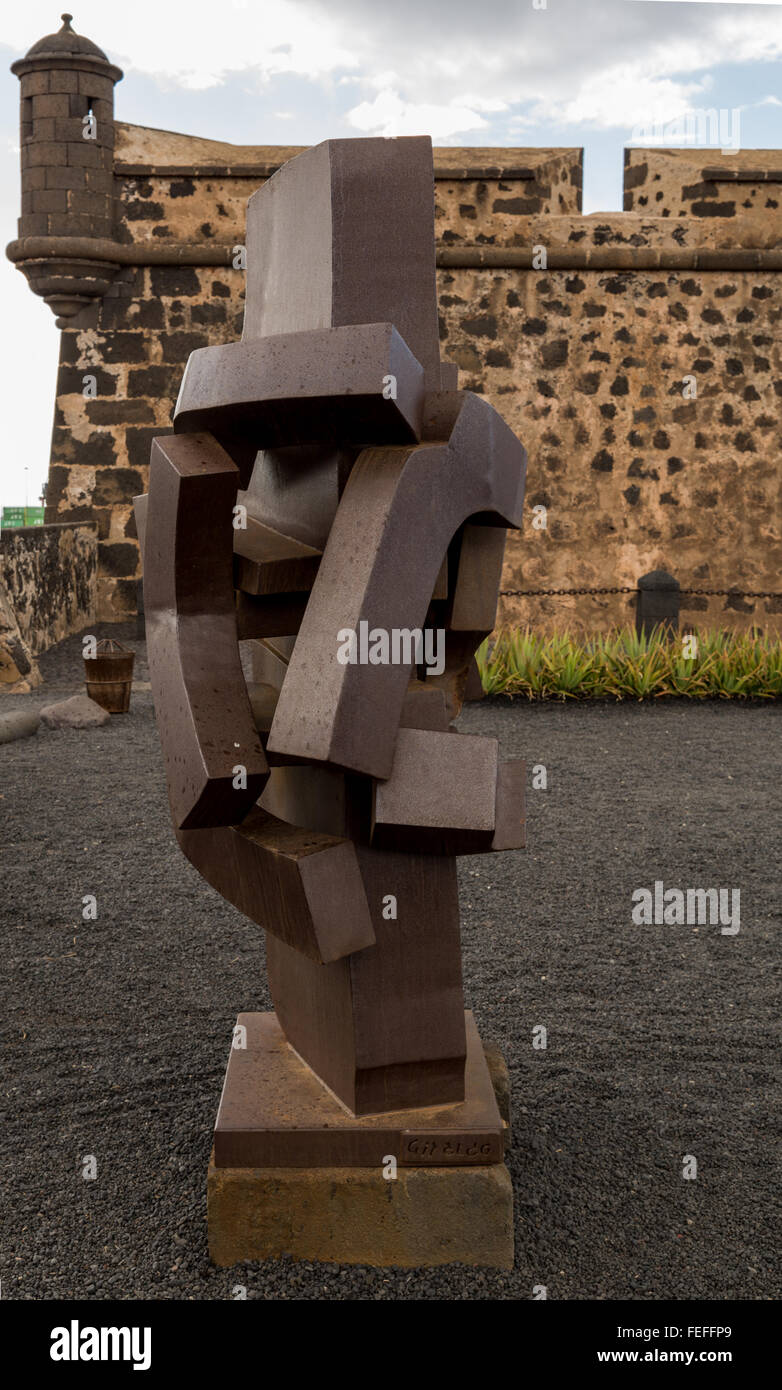Metal sculpture outside the International Museum of Modern Art, (MIAC), Castillo de San José, Arrecife, Lanzarote.

Image details
Contributor:
Simon Haggett / Alamy Stock PhotoImage ID:
FEFFP9File size:
50.8 MB (1.9 MB Compressed download)Releases:
Model - no | Property - noDo I need a release?Dimensions:
3270 x 5430 px | 27.7 x 46 cm | 10.9 x 18.1 inches | 300dpiDate taken:
13 October 2015Location:
Museo Internacional de Arte Contemporáneo, Castillo de San José, Arrecife, Lanzarote, Canary IslandsMore information:
The International Museum of Modern Art MIAC is located in the old military fortress of San José Castle. The museum was founded in 1975 with the aim of "promoting, bringing together and exhibiting the most significant works of modern artistic creation." It was created by a César Manrique's initiative, who directed personally the remodeling and conditioning works of San José Castle, which in those days was tumbledown. The works shown at the MIAC are a reflection of an artistic generation with its output mainly between the 1950´s and 1970´s. Among the works exhibited at the Museum the following artists stand out: Tàpies, Michavila, Amadeo Gabino, Sempere, Mompó; Millares, Canogar, Rivera and Juana Francés, belonging to the group " El Paso, " Mignoni, Gastón Orellana, Gordillo, Úrculo, Guerrero, Yturralde, Gómez Perales, Brikmann, Mampaso, Enrique Barón, Zóbel, Torner, Alechinsky, Beaudin and Le Parc. In regards to the Canarian artists highlights: César Manrique, Manolo Millares, Pancho Lasso, Oscar Domínguez and Cristino de Vera. Built between 1776 and 1779 the fort was constructed to provide a defensive stronghold in case of pirate attacks, and as a public works project to provide much needed employment during a time of famine and poverty on the island. It became commonly known as the Fortress of Hunger (Fortaleza del hambre). The famine was caused by a number of factors including periods of drought, and the earlier eruption of Timanfaya between 1730 and 1736, which devastated most of the productive agricultural areas on the island. Charles III of Spain, who was concerned for the plight of the islanders, ordered that the fortress be built.. Situated on a cliff above the Port of Naos, the D shaped fort has semi-circular walls facing the sea. On the landward side, the rear wall is protected by two small turrets, with a moat crossed by a lifting drawbridge leading to the main gateway. The fortress is constructed of masonry and ashlar blocks of volcanic origin.